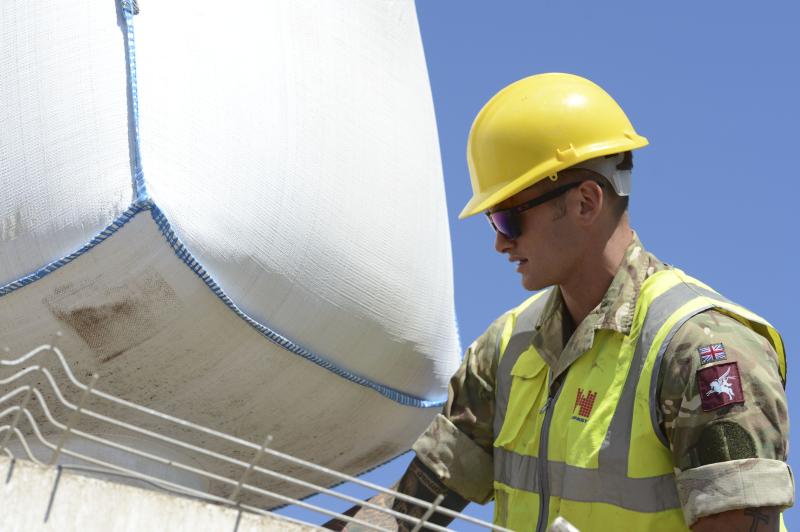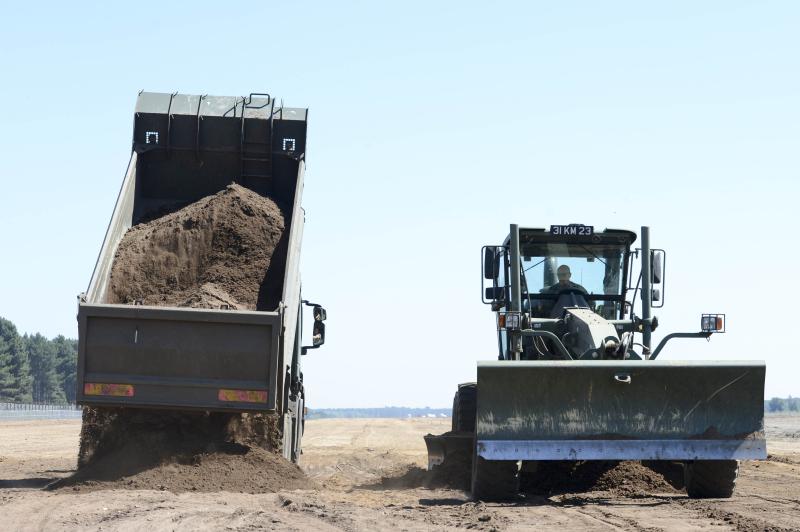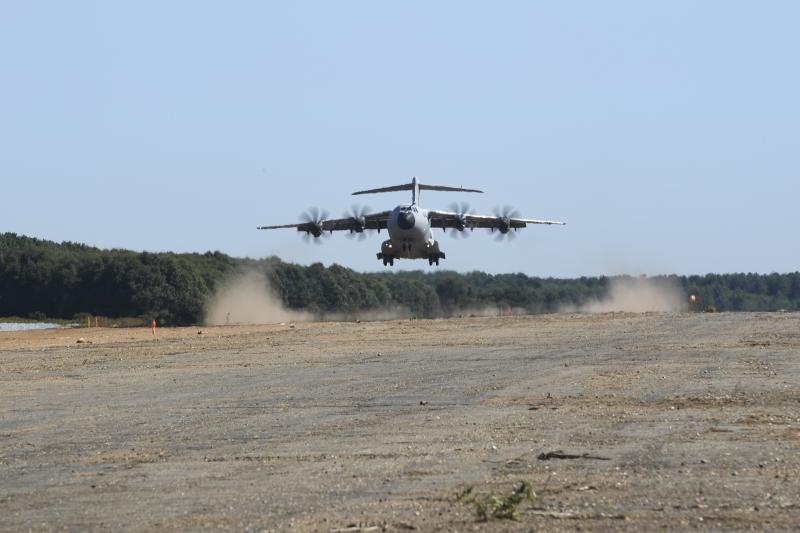Tag personnel
Log in to your Paradata account to identify personnel with our image tagging tool.
Description
Airborne Sappers’ give soft landing to A400M
Airborne Engineers have built a specially-softened runway to test the Airbus A400M Atlas, an aircraft that will be the backbone of the Royal Air Force’s transport aircraft fleet for the coming decades.
23 Parachute Engineer Regiment (23 Para Engr Regt) has built a 1.7km-long sand temporary landing zone (TLZ) from scratch at Rock Barracks in Woodbridge for MoD testing to prove the A400M’s ability to operate from soft runways.
The A400M is already in service with the RAF, with a fleet of 22 being purchased to gradually replace the C130 Hercules. It is capable of operating either at low or high-level altitudes and to deploy troops and/or equipment between and within theatres of operation, either by parachute or by landing on short, unprepared or semi-prepared strips.
Airfield construction and maintenance is a key skill for 23 Para Engr Regt as part of 16 Air Assault Brigade, the British Army’s airborne rapid reaction force. On an operation, for engineers to be able to build a TLZ - or repair a damaged runway - enables further troops and equipment to be flown in to develop a force’s capabilities.
Lieutenant Colonel John Clark MBE, Commanding Officer of 23 Parachute Engineer Regiment, said: “This has been a really exciting project for the Regiment. It has given us a major engineering project to apply our skills to and enabled us to build an understanding of the A400M, an aircraft that airborne forces will have an ongoing relationship with as it becomes the RAF’s main transport aircraft.”
The runway build at Woodbridge saw the sappers clear vegetation and topsoil away with diggers and bulldozers; level it with a grader to stringent length, width and gradient standards; and then compact it with a roller. The sappers then had to soften the runway to test the limits of the A400M’s performance, when usually they would aim to build a runway as hard as possible. More than 3,000 tonnes of bentonite clay were ploughed into the strip to soften it.
Staff Sergeant Nick Broom oversaw the design and construction of the runway. He said: “The land was rough grass and shrubbery when we started and to build the TLZ from scratch took three weeks, which is what we’d expect. Working out how to soften the surface to achieve the strict tolerances needed for the trials took a lot of extra thought and effort, which we’ve learnt a lot from. There’s a real sense of achievement for everyone involved to see the aircraft land on a runway that we’ve built.”
<p>MoD - © Crown copyright reproduced under <strong><span style="color:
rgb(165, 0, 33);"><a href="http://www.defenceimagery.mod.uk/fotoweb/
20121001_Crown_copyright_MOD_News_Licence.pdf"><span style="color: rgb(165,
0, 33);">licence</span></a></span></strong></p>






Latest Comments
There are currently no comments for this content.
Add Comment
In order to add comments you must be registered with ParaData.
If you are currently a ParaData member please login.
If you are not currently a ParaData member but wish to get involved please register.